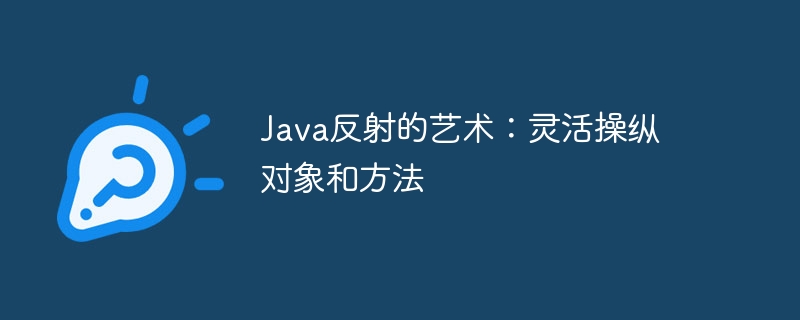

php editor Banana takes you to explore the wonderful world of Java reflection! Through the reflection mechanism, developers can dynamically manipulate objects and methods of Java classes at runtime to achieve flexible and efficient programming. This article will provide an in-depth analysis of the principles and applications of Java reflection to help you better grasp the essence of this technology and improve your programming skills. Let us uncover the mystery of the art of Java reflection and explore the fun and challenges!
The most basic concept of reflection is class objects. A class object represents a Java class and contains all information about the class, including its name, fields, and methods. To obtain a class object, you can use the Class.forName() method.
Once you have a class object, you can use it to create objects, call methods, and access fields. To create an object, you can use the Class.newInstance() method. To invoke a method, you can use the Method.invoke() method. To access fields, you can use the Field.get() and Field.set() methods.
Java reflection has many application scenarios, including:
The following is an example of Java reflection that demonstrates how to dynamically load classes, create objects, call methods and access fields:
import java.lang.reflect.Class; import java.lang.reflect.Method; import java.lang.reflect.Field; public class Main { public static void main(String[] args) { // 动态加载类 Class clazz = Class.forName("com.example. MyClass"); // 创建对象 Object object = clazz.newInstance(); // 调用方法 Method method = clazz.getMethod("getName"); String name = (String) method.invoke(object); // 访问字段 Field field = clazz.getField("age"); int age = field.getInt(object); // 打印结果 System.out.println("Name: " + name); System.out.println("Age: " + age); } }
This example first dynamically loads the class named "com.example.MyClass". Then, it creates an object of that class. Next, it calls the "getName" method on the object. Finally, it accesses the "age" field on the object.
Java reflection has many advantages, including:
Java reflection also has some disadvantages, including:
Java reflection is a powerful technology that can be used to dynamically manipulate objects and methods. It has many application scenarios, including dynamically loading classes, creating objects, calling methods and accessing fields. However, reflection also has some disadvantages, including performance overhead and security issues. Therefore, when using reflection, you need to weigh the pros and cons and use it with caution.
The above is the detailed content of The Art of Java Reflection: Flexible Manipulation of Objects and Methods. For more information, please follow other related articles on the PHP Chinese website!
